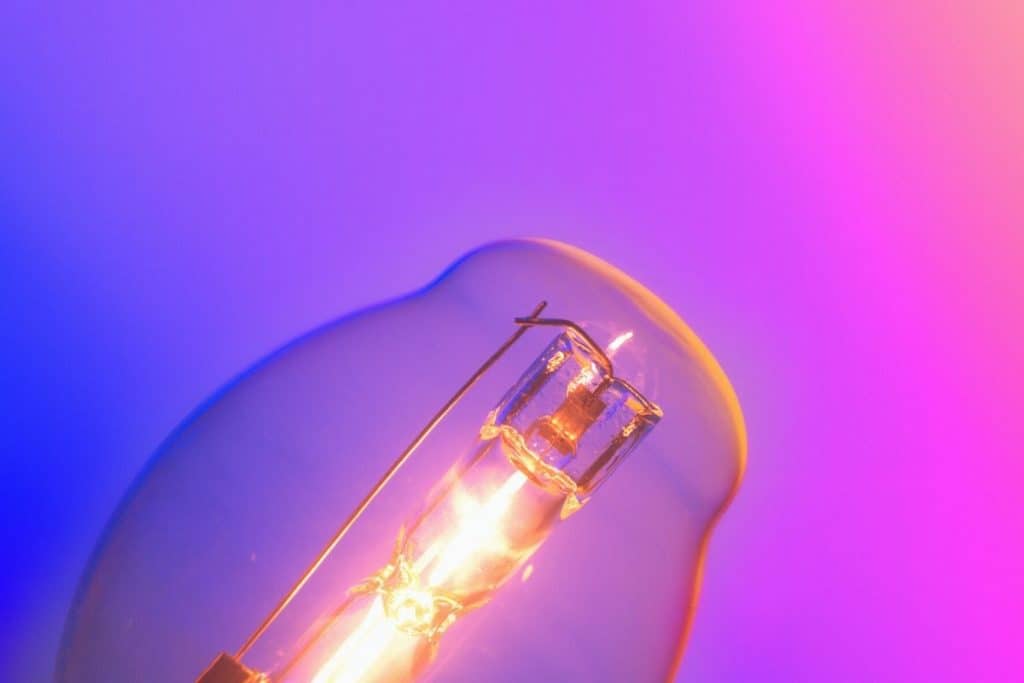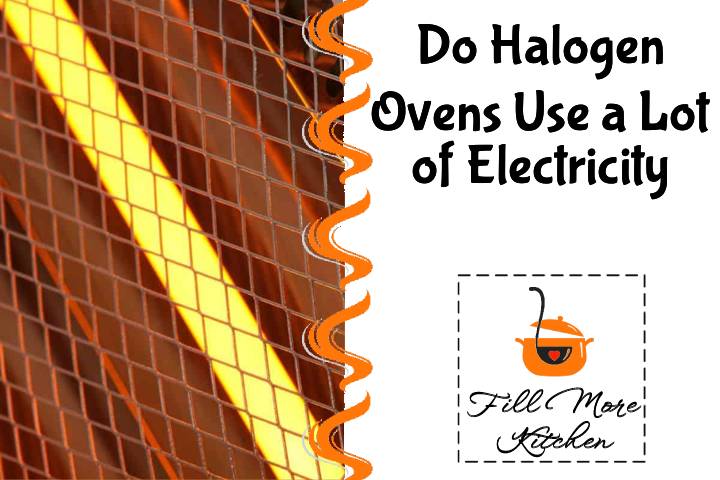After acquiring a new appliance, it’s natural to feel the urge to utilize it frequently and explore its capabilities. Nevertheless, individuals may worry about the amount of electricity consumed by their halogen oven.
Are halogen ovens high consumers of electricity? Halogen ovens consume more electricity per unit of time than traditional ovens. Nevertheless, due to their faster cooking time, they use less electricity overall to prepare any meal.
Halogen ovens typically operate at 1300 watts, and using one for an hour per day at the average US electricity rate of 13.19 cents per kWh would result in an annual cost of approximately $65.
Most individuals do not use their halogen ovens for more than one hour per day.
If you’re considering purchasing a halogen oven, it’s important to ensure that it doesn’t use excessive amounts of electricity. To make an informed decision, it’s worthwhile to gain some knowledge about how these ovens function and consume power.
What Is a Halogen Oven?
A kitchen appliance designed for cooking, a halogen oven generates heat using a bright halogen light and distributes it evenly with the help of a fan to cook food.
The halogen oven is equipped with a thermostat that enables it to monitor the temperature inside and automatically turn off the light if it becomes too hot.
Halogen ovens are popular due to their compact size and space-saving features, as well as their ability to cook food nearly three times faster than traditional ovens.
What Makes Halogen Ovens So Efficient?
Halogen ovens typically cook food much faster than traditional ovens, largely due to their unique method of operation.
As a rule, a halogen oven consists of a fan, halogen bulbs, a lid, and a glass bowl. Once activated, the bulbs emit far-infrared radiation that generates heat to cook your food. The fan’s role is to circulate hot air around the food for faster cooking.
Halogen ovens transfer large amounts of energy to food in short periods of time through radiation, which causes water molecules and organic compounds such as fats, proteins, and starches to vibrate and rotate.
As a result, this generates warmth that eliminates microorganisms present in the food and provides it with a crunchy and occasionally brown exterior.
Halogen ovens utilize radiation to cook food rapidly and effectively disinfect it, as infrared waves are commonly employed in the food industry for thermal disinfection purposes.
Halogen ovens have the ability to render various types of solid and liquid food free from spores, bacteria, mold, and yeast.
Halogen ovens employ dry heat, as opposed to the moist heat used by appliances such as pressure cookers. Moist-heat cooking uses steam and water as the medium, while dry-heat cooking relies on either air or the fat present in food. To learn more about how halogen ovens prepare meals, click here.
How Much Electricity Do Halogen Ovens Use?

There is limited information available about the energy consumption of halogen ovens due to their uncommonness, but the Centre for Sustainable Energy in the United Kingdom has provided some figures that can assist in addressing this inquiry.
When preparing a whole chicken thrice a week, a halogen oven will be less expensive than an electric oven but more costly than a gas oven since it uses more kWh of electricity, resulting in higher hourly electricity consumption.
Despite the fact that the cooking duration is considerably reduced, the halogen oven ultimately utilizes a smaller amount of electricity compared to an electric oven performing the same job.
It is important to note that halogen ovens are generally smaller than traditional ovens, which means that if you cook large quantities of food at once, you may consume more electricity and incur higher costs with a halogen oven. The effectiveness of the oven depends on the quantity of food being prepared.
It is important to keep in mind that halogen ovens use a considerable amount of electricity per hour. Nevertheless, due to the reduced cooking time, you may end up using less electricity overall, which can be beneficial for your electric bill in the future.
If you’re curious to learn more about halogen ovens and their electricity usage, click here for additional information.
What Are Some Things to Keep in Mind When Using a Halogen Oven?
Aside from electricity consumption, there are other factors to consider when using a halogen oven. It’s important to maintain it properly to ensure its longevity, regardless of whether or not it reduces your electric bill.
One thing you need to do with the halogen oven is to make sure that you keep the heating element safe. A lot of halogen ovens will include removable heating elements, and you need to take care of these in order to extend the life of the oven as long as possible.
If your halogen oven has a weak lid stand, it’s advisable to store the element in a grill tray rack for safety.
It is important to ensure that the lid of your halogen oven is cleaned regularly as it tends to accumulate the most cooking grease, and wiping it down with a damp cloth after every use is recommended.
A lot of halogen ovens will also come with extender rings, which allow you to cook multiple different types of food simultaneously. These can also help make sure that your food isn’t overcooked. This can be very useful when you’re trying to cook large items, such as roasts or whole chickens.
Compared to a conventional oven, the maintenance required for a halogen oven is significantly less due to its smaller size and distinctive design.
Furthermore, it is possible to prepare fast, uncomplicated, and nutritious dishes using one of these appliances, provided that you are familiar with its operation.
Final Thoughts
If you are considering purchasing a halogen oven, it may be a wise decision as although they use a considerable amount of electricity per unit of time, their rapid cooking times often compensate for this. Consequently, less electricity is utilized and your food will be prepared much faster.
If you are willing to maintain it properly, a halogen oven can be a valuable addition to your kitchen and daily routine.
Although not widely used, halogen ovens have several benefits that make them worth considering. Purchasing one will allow you to experience firsthand the advantages of these appliances.
By comparing your electric bill from using a conventional oven to that of a halogen oven, you can determine which one consumes more electricity.
You can also check this video about “Do Halogen Ovens Use a Lot of Electricity?”
Check out our top 10 reviews!
Related posts
https://fillmorekitchen.com/do-you-have-to-put-water-in-a-slow-cooker-crockpot/
https://fillmorekitchen.com/why-do-pressure-cookers-work-well-at-high-altitudes/
https://fillmorekitchen.com/can-you-run-an-empty-dishwasher-to-clean-it/
https://fillmorekitchen.com/snacks-that-start-with-the-letter-b/
https://fillmorekitchen.com/can-you-eat-chinese-takeaway-food-that-was-left-out-overnight/



